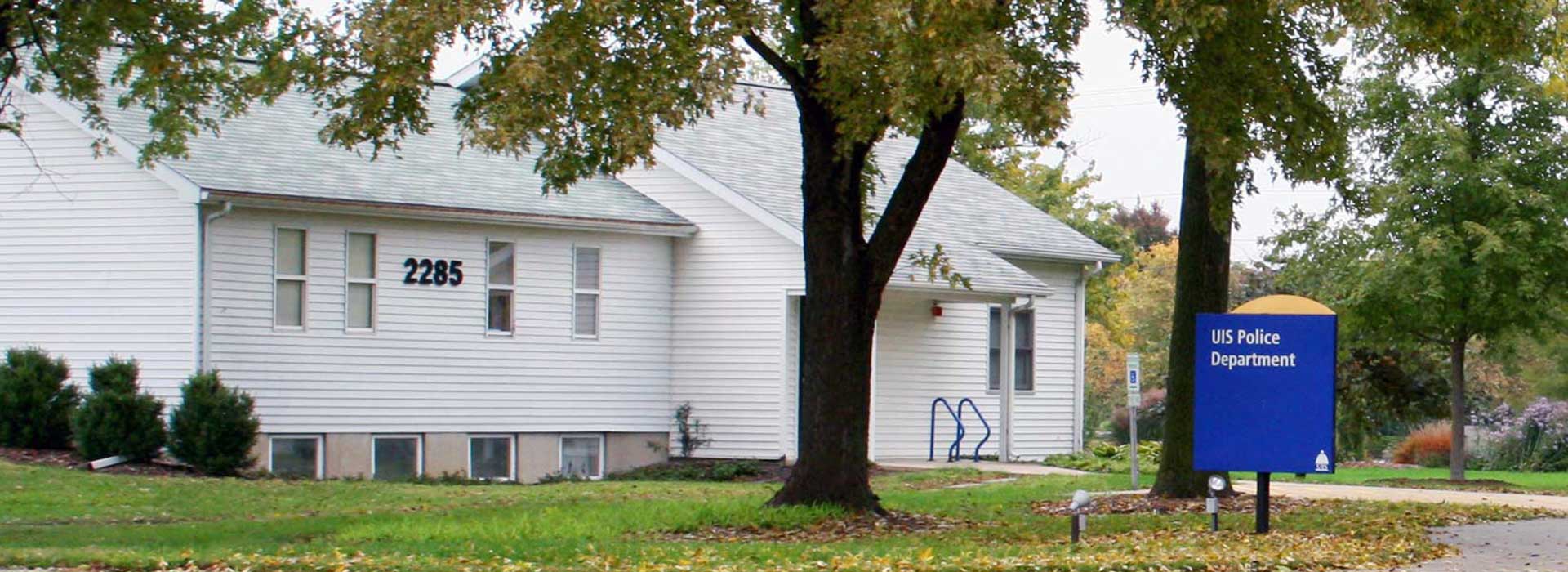UIS Campus Evacuation Plan
The University of Illinois Springfield Campus Evacuation Plan is outlined in detail within the Annual Security and Fire Safety Report.
Campus Closing Due To Emergency
If an emergency arises that warrants an evacuation of the campus (e.g., hazardous material leak, chemical spill, catastrophic weather, etc.), the Chancellor or Chief of Police or their designee will initiate the Campus Evacuation Plan (Evacuation Plan).
Critical Emergency Personnel
For purposes of the Evacuation Plan, Critical Emergency Personnel include police, building maintenance, housing staff (Resident Directors and Resident Assistants), and UIS Command Staff. Critical Emergency Personnel are expected to remain on duty throughout the emergency until dismissed by the Chancellor or Chief of Police or their designee. Critical Emergency Personnel may be relocated off campus if the situation is warranted.
Only Critical Emergency Personnel will be permitted to remain on campus after it is closed and evacuated. If circumstances permit, UIS Police will check campus buildings to ensure that no unauthorized personnel remain on campus during the evacuation.
Information Resources
Instructions for evacuation and updates about the incident will be communicated by the university via the RAVE Alert System (text messages), email, classroom phones/outdoor speakers, social media (Facebook/X), campus website updates broadcasting on the campus television channel, or other available means.
Evacuation Procedures
- Students, staff, and faculty who can secure their own transportation to evacuate campus should do so immediately upon the order of a campus evacuation event.
- UIS will provide information about temporary emergency shelter for students, staff, and faculty unable to evacuate on their own via the emergency alert system or other available means.
- If available, UIS will provide transportation to pick up students, staff, and faculty at either I-Lot at the Recreation & Athletic Center (TRAC) or B-Lot by Brookens Library (location will depend upon the nature and location of the emergency) at a predetermined time to transport them to the temporary emergency shelter.
• The designated departure time of the transportation will be strictly enforced. Anyone who fails to
report to the loading area will be responsible for securing his or her own emergency shelter.
• A critical emergency personnel staff member will always remain at the emergency shelter.
• Evacuees should expect very limited accommodation and resources at the temporary emergency
shelter. The accommodation may consist of sleeping on an open gym floor without cots.
• Evacuees must abide by all rules of the shelter. All University of Illinois System and UIS policies
remain in effect.
Aftermath/Recovery Plans
Once the emergency has passed, the Chancellor (or designee) will determine when it is safe to return to campus. All buildings, grounds and utilities will be inspected for damage prior to permitting re-entry.
If the Campus is Deemed Safe
- The Critical Emergency Personnel member at the shelter will announce a departure time and designated loading area.
- UIS will notify evacuees that it is safe to return to campus via text from the UIS RAVE Alert System email and/ or update on the UIS homepage, as available.
- Displaced on-campus residents will not be allowed to return to housing until their housing assignments are ready for occupancy (in the event that some but not all the campus facilities are damaged).
If the Campus is Deemed Unsafe and/or will be Closed for a Prolonged Period
- Evacuees and emergency personnel will make individual plans for long-term relocation. Evacuees are expected to make their way to the nearest airport, train station or bus station so they may make appropriate travel plans. All expenses incurred will be the individual’s responsibility.
- UIS will provide status updates through the RAVE Alert System, email, and website updates.
The UIS Emergency Response Plan identifies five levels of emergencies
Level 1: Minor department or building incident – can be resolved by a responding service unit (e.g., Facilities and Services responds to a broken water pipe or short-term heating or electrical outage.)
Level 2: Department or building incident – can be resolved with existing UIS resources or limited outside assistance. These incidents are usually one-dimensional events having a limited duration and little impact except those using the space/building in which the incident occurs (e.g., minor chemical or fuel oil spills; loss of building heat or electricity for several hours; minor fire confined to a room and not involving hazardous chemicals; etc.).
Level 3: Primarily people, rather than infrastructure focused incident. Many student issues can become complex because of varied institutional and student support responses that must be coordinated. For these situations, written departmental plans must be put in place and implemented (e.g., assaults; sexual assaults; building/office occupation; hate crimes; bomb threats; etc.).
Level 4: Major emergency impacting a sizeable portion of the campus and/or outside community. These emergencies may be single or multi-hazard situations and often require considerable coordination both within and outside UIS. These emergencies include projected events on campus or in the general community that may develop into a major UIS crisis or a full-scale disaster (e.g., heating plant failure; extended power outage; severe storms; major fires; contagious disease outbreak; domestic water contamination; etc.).
Level 5: Catastrophic emergency involving the entire campus and surrounding community. Immediate resolution of the disaster, generally multi-hazard, is beyond the emergency response capabilities of campus and local resources (e.g., earthquake or tornado requiring state and/or federal assistance).
Level 4 or Level 5 emergencies require the Incident Response and Recovery Team to assemble.
